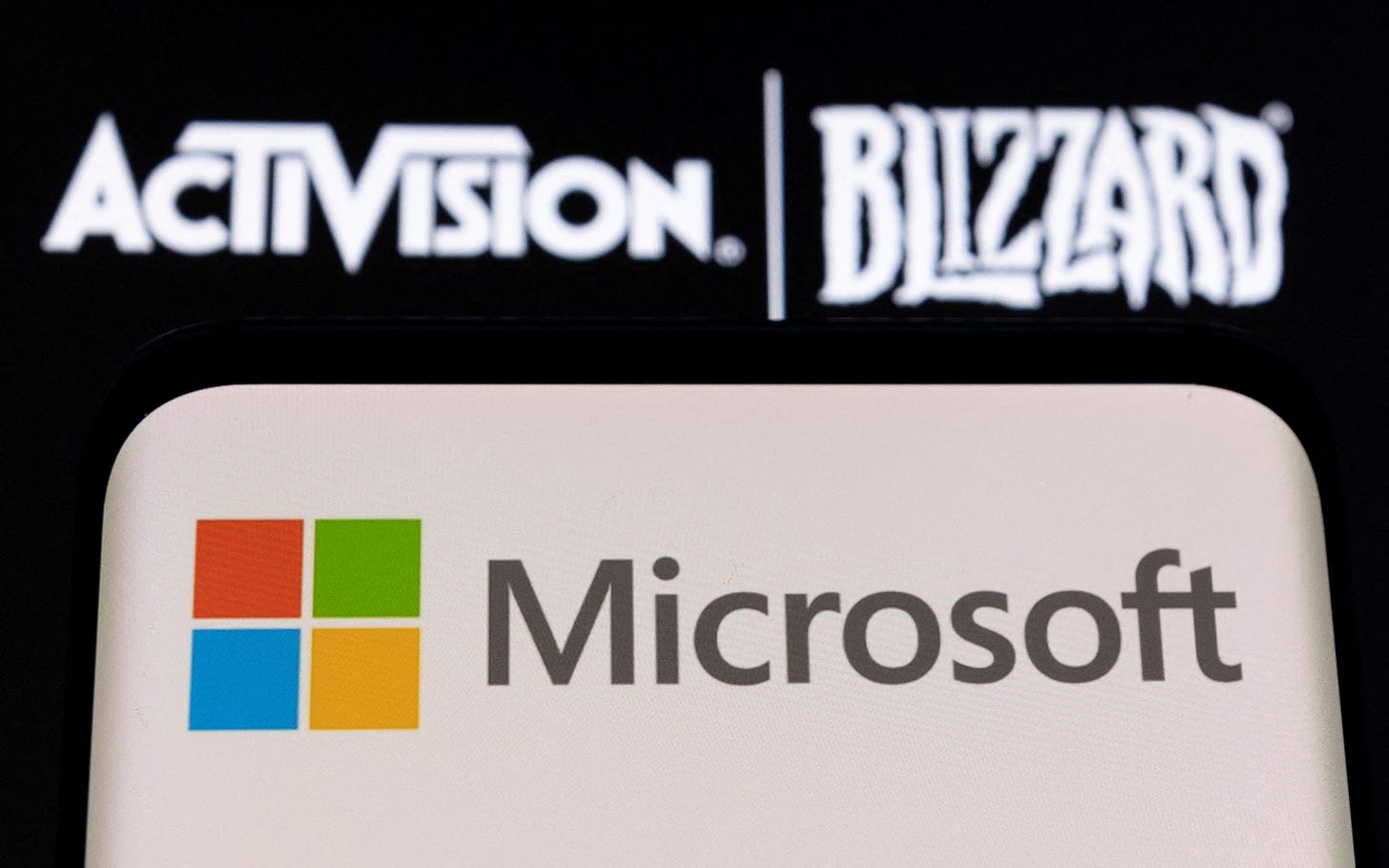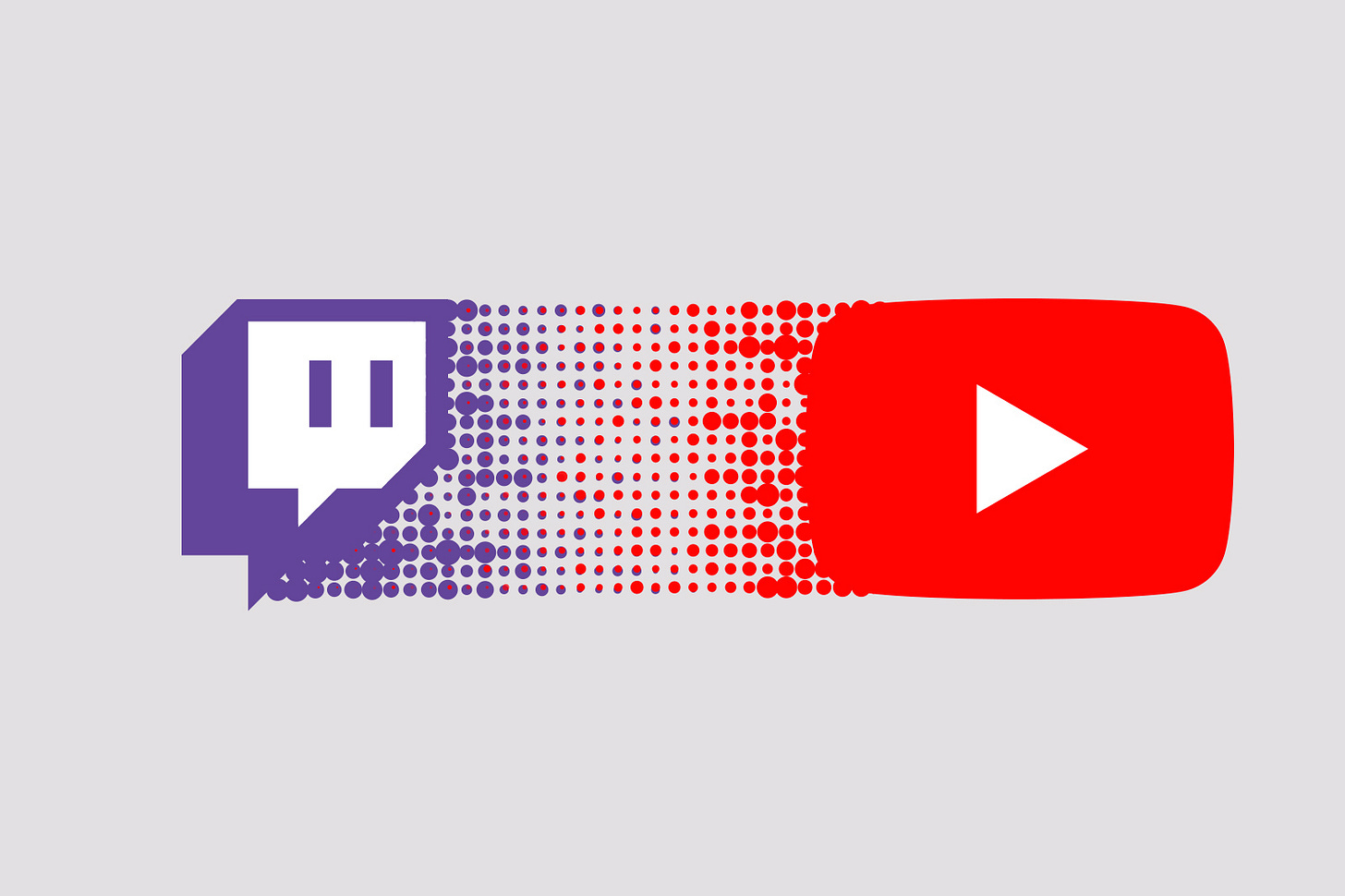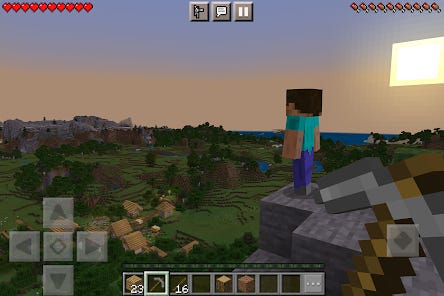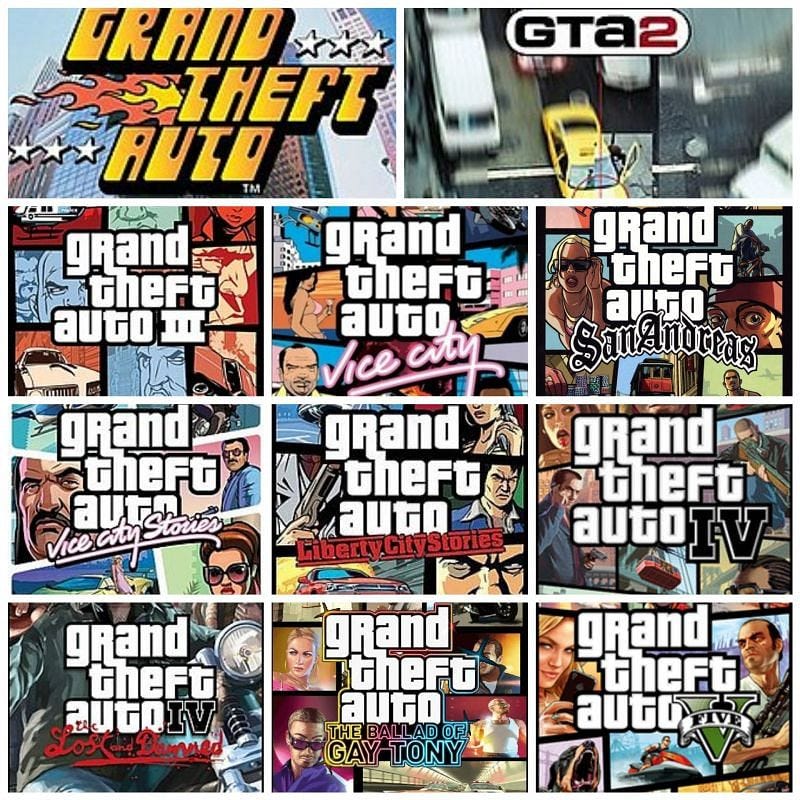MSFT acquisition of ATVI update
Since my article on December 21, the FTC and MSFT have been at a legal standstill, with no substantial settlement discussions occurring between the parties as of yet. However, some developments have arisen which put dates on important events within the dispute. The acquisition is currently under inspection by the EU, which has until March 23 to decide whether or not to pass the deal. Hearings have also been set for August of 2023, after which FTC administrative law judge Micheal Chappell will rule on the exchange.
Additionally, MSFT has stepped away from the argument within the original response to the FTC’s lawsuit claiming that the lawsuit was unconstitutional. In the original filing (Which can be found here), bullets 17-22 in the affirmative and other defenses section (pg. 34) all referenced that the FTC was apparently breaking Article II and the separation of powers, Article III, the Fifth Amendment, and the Due Process Clause.
These proceedings are invalid because the structure of the Commission as an independent agency that wields significant executive power, and the associated constraints on removal of the Commissioners and other Commission officials, violates Article II of the U.S. Constitution and the separation of powers.
These proceedings are invalid because adjudication of the Commission’s Complaint by the ALJ and the Commission violates Article III of the U.S. Constitution and the separation of powers.
The Commission’s procedures arbitrarily subject Microsoft to administrative proceedings rather than to proceedings before an Article III judge in violation of Microsoft’s right to Equal Protection under the Fifth Amendment.
The Commission’s procedures violate Microsoft’s right to procedural due process under the Due Process Clause of the Fifth Amendment.
The structure of these administrative proceedings, in which the Commission both initiates and finally adjudicates the Complaint against Microsoft, violates Microsoft’s Fifth Amendment Due Process right to adjudication before a neutral arbiter.
These administrative proceedings violate Microsoft’s Fifth Amendment Due Process right to adjudication before a neutral arbiter as applied to Microsoft because the Commission has prejudged the merits of the instant action.
The amended version, accessible here, is in general less aggressive than the initial response, but that might not necessarily be a bad thing. MSFT has more than enough arguments to use, so giving up on some arguments may actually make the biggest points stronger. With this update, I still remain bullish on the ATVI, since MSFT continues to handle litigation well and holds some extremely compelling arguments.
Other points:
MSFT has offered on several occasions to reach an agreement with the FTC that would quell the FTC’s concerns
The hearing in August is set one month after MSFT’s initial bid on ATVI expires
In a separate case, the Supreme Court heard arguments in November concerning whether the FTC’s structure and administrative court violate the constitution. No decision has currently been reached.
How to judge the value of a video game
Not many people know this, but before I created the Amateur Investor I actually had a separate Substack that talked about video games. While it was “mildly” less successful, I did take away a thing or two from that experience.
For example, if you want any views at all on an article about games, you actually need to be able to recognize which games are likely to grow in popularity. Now, that didn’t really help me at the time because there is practically no audience for articles about video games, and any existing audience is only looking for a quick tutorial. However, when it comes to the financial world, this is a much more useful skill. The gaming market is at an explosive growth rate and extremely competitive, so much so to the point that even a single title release can make or break a company. When I am trying to determine if a video game is going to take off, there are a few factors that I generally look for asides from simply whether the game is fun. Those factors are media attention, multiplayer capability, updates, monetization, and franchising.
Media Attention
Possibly the most important, but also easiest to judge, is media attention towards that game. While some games are popular even without widespread attention, the vast majority of popular games have a significant number of content creators playing them. This is especially true for brand-new releases without a franchise since these games don’t have any pre-existing knowledge of them. When you think of media attention, you are most likely thinking of one of the major news outlets, right? While this generally is the largest source of media attention, when it comes to gaming that isn’t actually where you should be looking first. Instead, gaming media is actually mostly composed of YouTubers and Twitch streamers. For example, 2018’s Among Us, a wildly popular game that has grossed over $86 million dollars in revenue rose almost entirely because of content creators playing it. One reason why these content creators have such a big impact is that most people who play games will also watch these creators, and seeing their favorite streamer or YouTuber playing a game influences their buying habits. For creators to use a game for their content, there is a very, very, simple requirement: it has to be fun to watch. Some games can be really fun to play, but beyond dull to watch. Content creators are playing games for their followers, not themselves. Because of this, a game likely to gain a creator's attention is one that is entertaining to watch.
Criteria for Media Attention:
Fun to watch someone play
Large creators are producing consistent videos on the game
Multiplayer Capability
Similar to media attention, multiplayer capability helps spread awareness of the game and also creates more content within the game. The primary advantage of having a game being multiplayer is that it helps the game spread. One of your friends might get it, then you get it, then you get someone else to get it, causing a ripple effect. Another advantage provided by having multiplayer is that you will be playing the game with people who you like, causing you to spend more time and have more fun playing the game. And after all, happy customers are paying customers.
Criteria for Multiplayer Capability:
Can play the game with friends
Updates
Even once a game becomes popular, there is still a struggle to remain so. After all, the gaming market is immensely competitive, so for a game to stay popular and remain popular for years is for the developers to give a constant stream of updates delivering new content. Possibly the best example of this would be Minecraft. Despite being released back in 2011, Minecraft has continually updated, bringing brand-new content into the game regularly. These changes bring new players in and old players back, while still staying true to the original release. These updates also help keep content creators interested in producing content related to Minecraft, which in turn drives even more people to the game. Although this is definitely a far-extreme example, regular and substantial updates are definitely a must for games to retain their popularity.
Criteria for updates:
Developers release regular updates that change the game noticeably (not just code optimization)
Monetization
When it comes to gaming, there are two primary ways for a game to make money:
Pay to purchase the game
Spending money on the game
Almost all games cost at least something to buy, while some can be bought for free but include in-game purchases. While both strategies work, the most successful games combine both forms of monetization. Paying for video games has existed as long as video games themselves, so very few games have issues with this method of monetization. However, in-game purchases, or microtransactions, are a relatively new idea and thus are harder to get right. The trick for microtransactions is to reach a balance, because if you shove prompts to purchase coins or “Buy this awesome car for only $9.99” this negatively impacts the player experience. Likewise, if you are too subtle about microtransactions, players might not know it’s an option, which would negatively impact profits. One of the most effective strategies for microtransactions is that of the in-game currency. Most games have their own currency to be used to get in-game items, which are obtained through gameplay. The in-game currency strategy is simply that you spend money to either get the normal in-game currency or a premium currency, which serves the same purpose as normal except you need to pay for it. The reason this is so effective is that because you spend money on the currency, then the currency on the in-game item, a certain dissociation is formed. It is substantially easier to spend $20 on 10 super-extra-rare-gems then 5 super-extra-rare-gems on an in-game car than to spend $10 on some random pixelated car. Speaking from experience, it is almost scary how well it works.
Criteria for monetization:
Takes advantage of both paying for game and microtransactions
Microtransactions are not shoved in the faces of each player, nor go unnoticed
Microtransactions take advantage of in-game currency to form dissociation with money being spent
Franchising
Video games are valuable on their own, but by creating a franchise they become much more valuable as a whole. This is because customers will build brand loyalty to a franchise they enjoy playing on, and thus are more likely to purchase other games from the franchise in the future. Popular franchise GTA for example has 3 titles in the top 50 best-selling video games of all time, or Call of Duty, with 5 titles. Franchising also helps to establish security for the gaming company, because it helps to grow the player base that will buy a game simply because a certain studio released it.
Criteria for Franchising:
The game is either in a franchise or sets up the possibility of a franchise
Complete criteria list:
Can play the game with friends
Fun to watch someone play
Large creators are producing consistent videos on the game
Developers release regular updates that change the game noticeably (not just code optimization)
Takes advantage of both paying for game and microtransactions
Microtransactions are not shoved in the faces of each player, nor go unnoticed
Microtransactions take advantage of in-game currency to form dissociation with money being spent
The game is either in a franchise or sets up the possibility of a franchise
Using this set of criteria I have determined what I believe is one of the best opportunities for the gaming market: The GTA franchise. Owned by Take-Two Interactive (TTWO), the GTA franchise is one of the most popular of all time. When it comes to the criteria, it checks literally every single box. But that isn’t the only reason why I believe its value is extremely likely to skyrocket in the near future. See, TTWO has an ace in the hole. One of the most anticipated games of all time to the point that many aren’t even sure it will ever exist. Without even being released, literal millions of views have been gathered online by people pretending to have received the game early, Grand Theft Auto VI. Rockstar Games, a subsidiary of TTWO, and the developers of the GTA franchise have announced GTA VI being “well into development” with the game expected to be released by 2024. However, people have literally been expecting GTA VI’s release since the day GTA V came out, so until an actual release date is confirmed I still remain wary of Rockstar’s claim. Should GTA VI release, I would be extremely bullish on TTWO in the story term.











Very thorough and well-written, thank you for introducing me to a world I am not familiar with.
*Monetization